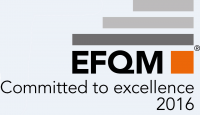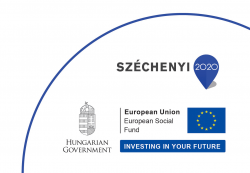Thoracic surgery
It was in July 1959 when thoracic surgeries began at the Department of Surgery, where Dr. Frigyes Kulka organized and headed a division. Most surgeries were lung resections due to TBC till the end of the ‘60s. This was followed by an increase in the number of surgeries made necessary by lung tumors, especially malignant ones. From the ‘70s on, the vast majority of interventions were aimed at removing such tumors. It was also Dr. Kulka who spearheaded the introduction of the surgical treatment of Thoracic-Outlet-Syndrome (TOS) and that of emphysema. The latter surgeries were way ahead of their time.
Dr. Imre Tróján was the head of the Thoracic Surgery Division between 1979 and 2005. The overwhelming majority of surgeries during his tenure were also carried out to remove tumors. In the ‘80s, however, the mere removal of tumors was accompanied by the introduction of the mediastinal lymph node dissection, meeting state-of-the-art thoracic surgery requirements. This enabled the precise determination of the extent of cancerous growths, and the stage-accurate treatment of patients with tumors. Consequently, the 5-year survival rate of operated lung cancer patients rose to 45.3%. Apart from tumor-related surgeries, the first tracheal and bronchial sleeve resections took place in Szeged, which intervention resulted in the preservation of lung tissue and in the patients’ better post-operative life quality. The Szeged Thoracic Surgery Division was among the first in Hungary to introduce minimally invasive thoracic surgeries, the so-called video-assisted thoracoscopic surgeries (VATS). Here, surgical exploration happens without opening the chest cavity in the old-fashioned way. Initially, surgical treatment of benign pulmonary lesions and PTX, as well as removal of benign mediastinal diseases took place, reducing post-operative recovery time significantly.
Dr. József Furák has been the head of the Thoracic Surgery Division since November 2005. The main focus of the Division is still lung cancer related surgeries. In addition to the previously applied, traditional exploration of the chest cavity (thoracotomy), the video-assisted axillary mini-thoracotomy (VAMT) was introduced (involving 6-8 cm-long incisions), followed by VATS lobectomies (video-assisted thoracoscopic surgery lobectomy), introduced in 2012. The range of video-assisted thoracic surgeries has continued to grow. The Szeged Division was the first to introduce VATS Thymectomy for Myasthenia Gravis, requiring no cutting through the breastbone (no sternotomy), and by now it has become a routine intervention. The NUSS procedure, a VATS-method surgical reconstruction of sunken chests (pectus excavatum) is also a basic element of the Division’s profile. No cutting through the breastbone is necessary during the NUSS procedure. Rather, two 3-cm incisions made using the VATS method are enough to correct the shape of the chest. In addition to the strictly speaking thoracic surgeries, the Division also carries out general surgeries and cooperates with other specialty fields such as heart surgery and neurosurgery to perform interdisciplinary operations. In fact, thyroid gland surgeries are also very common. The lung volume reduction surgery, used to improve breathing in some people with severe emphysema, has also been introduced after a long planning period.
A major performance indicator of thoracic surgery departments is the ratio of VATS procedures, which, in the case of the Szeged Division, amounts 75%. This is remarkable even on a European level.
The overall number of thoracic surgeries carried out in 2022 was 625 of which 254 were in connection with lung tumours.
In 2016, the Szeged Thoracic Surgery Division joined the European Society of Thoracic Surgeons (ESTS), and our division is still accredited by the ESTS.
Performing non-intubated thoracic surgeries (NITS) is well-known common practice in the thoracic surgery specialty. The Szeged Division has been performing NITS procedures since 2017.
It was the Szeged Thoracic Surgery Division where the spontaneous ventilation with double lumen endotracheal tube intubation (SVI) method was developed and introduced for the first time, combining spontaneous ventilation with the intubated method. A major benefit of the SVI method is that it combines the minimally invasive nature of NITS procedures and the safety of intubation while reducing the number of exclusion criteria. The SVI method can be applied safely to video-assisted thoracic surgeries and even to surgeries involving a thoracotomy.
One of the future plans is to join robotic surgery programs if possible.
The ultimate goal of the Szeged Thoracic Surgery Division is to be at the cutting edge of the profession and to use this state-of-the-art knowledge to enable that ever more patients can heal.
Dr. M.D.-PhD-Habil. József Furák
Associate Professor, Head of Division/ Thoracic Surgeon/
Dr. M.D. Balázs Pécsy
Board-certified clinical specialist/ Thoracic Surgeon/
Dr. M.D. Tibor Németh
Board-certified clinical specialist/ Thoracic Surgeon/
Dr. M.D.-Ph.D. András Buzás
Board-certified clinical specialist / Thoracic Surgery Resident/





